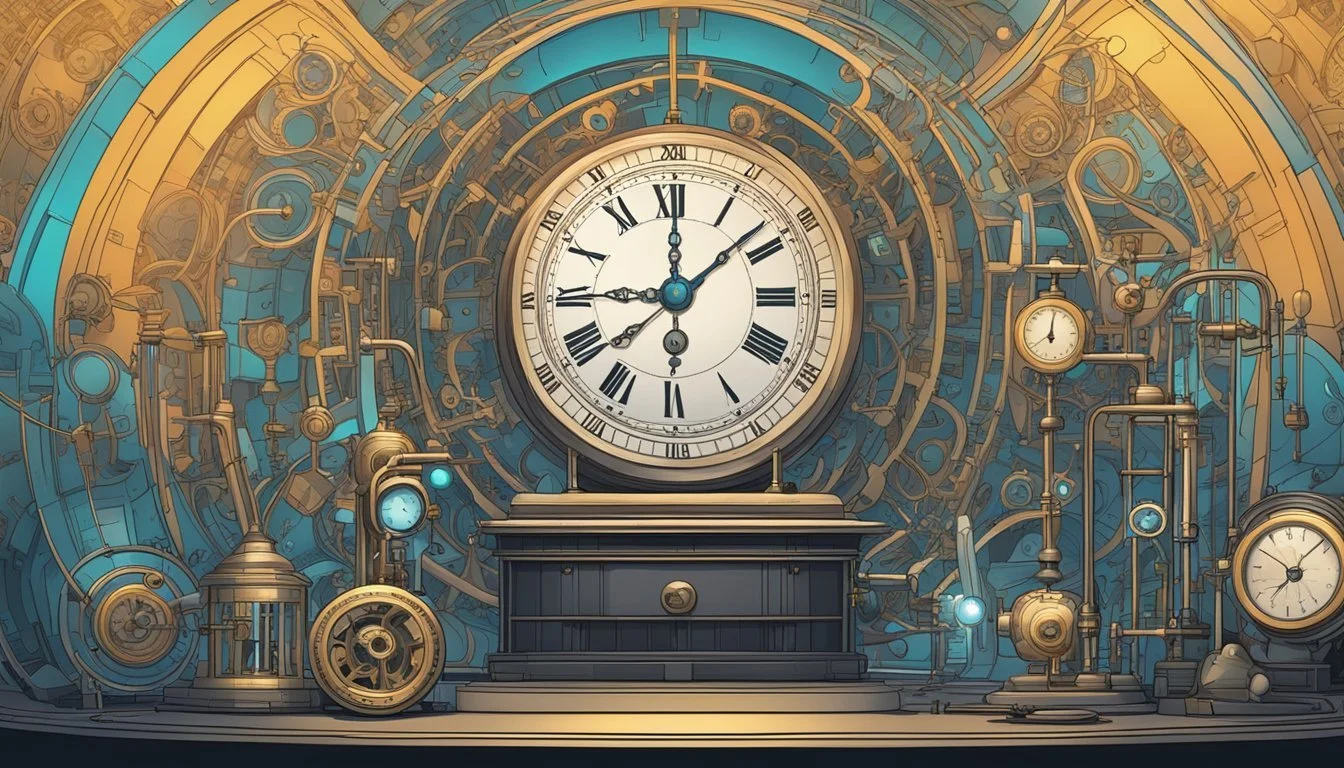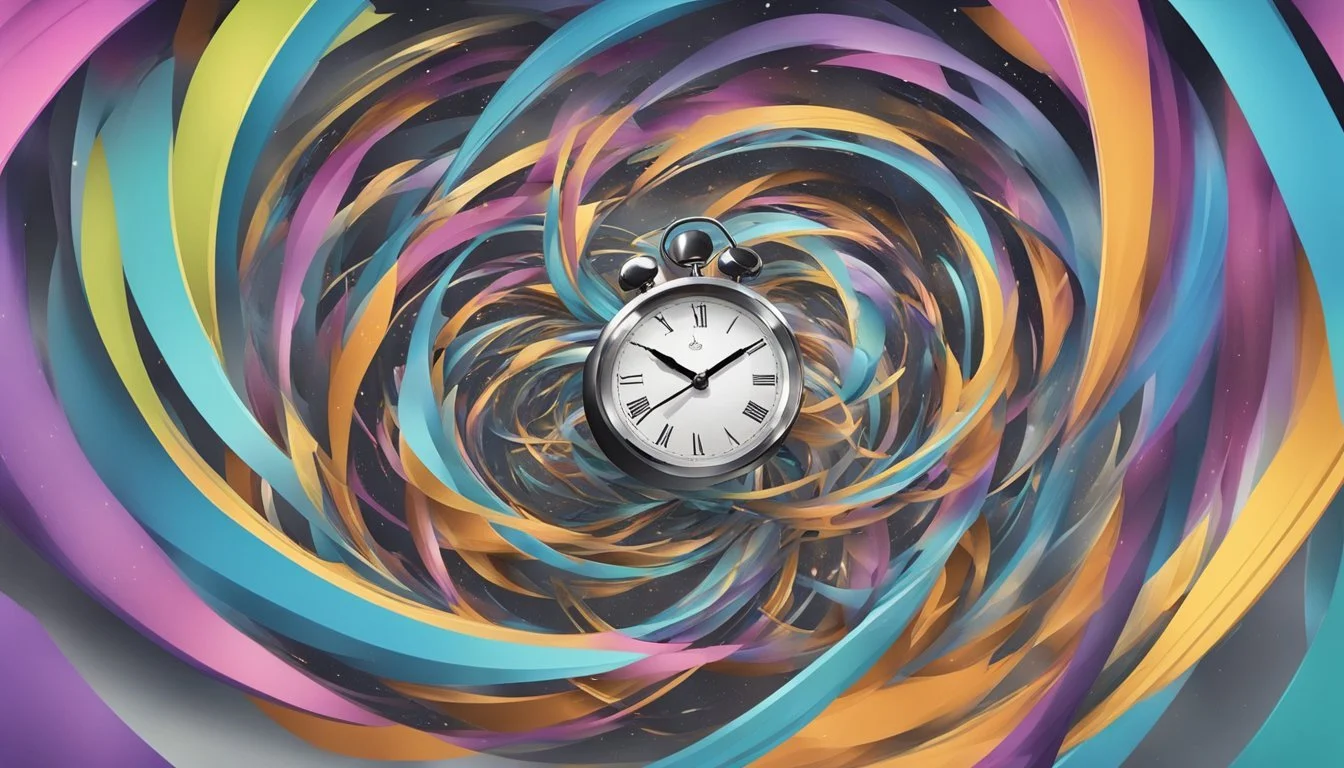5 Documentaries About the Most Mind-Bending Time Dilation Experiments
Exploring Relativity's Effects on Time
Time dilation, a concept rooted in Einstein's theory of relativity, challenges our everyday understanding of time. This phenomenon, where time passes at different rates for objects moving at high speeds or in strong gravitational fields, has captivated scientists and the public alike. Documentaries exploring time dilation experiments offer viewers a unique glimpse into the cutting-edge research that demonstrates this mind-bending aspect of our universe.
These films blend scientific explanations with real-world examples, making complex physics accessible to a broad audience. From atomic clocks on airplanes to GPS satellites orbiting Earth, time dilation experiments reveal the surprising malleability of time itself. By showcasing these experiments, documentaries help bridge the gap between theoretical physics and observable reality, inviting viewers to reconsider their perception of time and space.
1) Einstein's Twins Paradox Explained
The documentary "Einstein's Twin Paradox Explained" explores one of the most intriguing thought experiments in special relativity. It presents the scenario of identical twins, with one remaining on Earth while the other embarks on a high-speed space journey.
The film delves into the concept of time dilation, explaining how the traveling twin experiences time more slowly due to their near-light-speed velocity. This results in the space-faring twin aging less than their Earth-bound sibling.
Through engaging animations and expert interviews, the documentary breaks down the complex physics behind this phenomenon. It addresses common misconceptions and clarifies why this apparent paradox is not actually a contradiction in Einstein's theory.
The film also touches on real-world applications of time dilation, such as its effects on GPS satellites and particle accelerators. It demonstrates how these principles, while seemingly counterintuitive, have been experimentally verified.
Viewers are left with a deeper understanding of the nature of time and space in our universe. The documentary effectively illustrates how special relativity challenges our everyday perceptions of reality.
Einstein's Twin Paradox Explained on TED-Ed
2) Atomic Clock Experiments at NIST
NIST's groundbreaking atomic clock experiments have revolutionized our understanding of time dilation. These precision instruments use ultracold atoms to measure time with unprecedented accuracy.
One documentary explores NIST's strontium lattice clock, capable of keeping time to within one second over 15 billion years. It showcases how researchers use this technology to detect relativistic effects at microscopic scales.
Another film delves into NIST's ytterbium optical lattice clocks. These devices, accurate to 10^-18, allow scientists to observe time dilation between clocks separated by just a millimeter in height.
A third documentary examines NIST's aluminum ion clock. This remarkable timepiece loses only one second every 33 billion years, enabling researchers to test fundamental physics theories with extraordinary precision.
The fourth film focuses on NIST's cesium fountain clock, the current basis for the official definition of the second. It demonstrates how this technology underpins global timekeeping and navigation systems.
3) The Hafele–Keating Experiment Insights
The Hafele-Keating experiment, conducted in 1971, stands as a landmark test of Einstein's theory of relativity. Physicists Joseph C. Hafele and Richard E. Keating set out to demonstrate time dilation effects using atomic clocks.
They flew caesium-beam clocks on commercial airliners traveling in opposite directions around the world. This ingenious setup allowed them to compare time elapsed between the airborne clocks and a stationary clock on the ground.
The results confirmed Einstein's predictions. The eastward-flying clock lost time relative to the ground clock, while the westward-flying clock gained time. These tiny differences, measured in nanoseconds, provided tangible proof of relativistic time dilation.
This experiment showcased how motion and gravity affect the passage of time. It demonstrated that time is not absolute but can vary depending on an object's speed and position in a gravitational field.
The Hafele-Keating experiment's findings have far-reaching implications, from GPS technology to our understanding of cosmic phenomena. It remains a cornerstone in the field of relativistic physics.
https://en.wikipedia.org/wiki/Hafele%E2%80%93Keating_experiment
4) Cosmic Ray Muons and Time Dilation
The documentary "Particle Fever" explores the world of particle physics and includes a segment on cosmic ray muons. These subatomic particles provide compelling evidence for time dilation.
Muons are created high in Earth's atmosphere when cosmic rays collide with air molecules. They have a very short lifespan of about 2.2 microseconds when at rest.
Based on this lifespan, muons should not be able to reach the Earth's surface before decaying. However, scientists detect large numbers of muons at ground level.
This apparent paradox is explained by time dilation. The muons are traveling at nearly the speed of light, causing time to slow down from their perspective.
As a result, the muons experience less time passing during their journey to Earth's surface. This allows many more of them to survive the trip than classical physics would predict.
The film showcases this phenomenon as a powerful real-world demonstration of Einstein's theory of special relativity.
https://en.wikipedia.org/wiki/Particle_Fever
5) Gravity Probe A and General Relativity
Gravity Probe A was a groundbreaking space experiment that tested Einstein's theory of general relativity. Launched in 1976, it aimed to measure the gravitational time dilation effect predicted by Einstein's equations.
The experiment sent a hydrogen maser, an extremely precise atomic clock, into space on a suborbital trajectory. Scientists compared its timekeeping to an identical clock on Earth to detect differences caused by gravity's effect on time.
Results showed that time indeed moved faster for the clock in space, away from Earth's gravitational field. This confirmed Einstein's prediction that gravity influences the passage of time, with stronger gravitational fields slowing time relative to weaker fields.
Gravity Probe A provided crucial empirical evidence supporting general relativity. It demonstrated that time is not absolute but can be warped by gravity, a concept that continues to challenge our everyday perceptions of reality.
This experiment paved the way for further tests of relativity and advanced our understanding of space-time. Its findings have practical applications in modern technology, including GPS systems that must account for time dilation effects to function accurately.
Learn more about Gravity Probe A
Understanding Time Dilation
Time dilation is a fascinating phenomenon that challenges our perception of time as constant and universal. This effect causes time to pass at different rates for objects moving at high velocities or in strong gravitational fields.
Theory of Relativity Overview
Albert Einstein's theory of relativity revolutionized our understanding of space and time. Special relativity, introduced in 1905, reveals that time is not absolute but relative to the observer's frame of reference.
The theory posits that the speed of light is constant for all observers, regardless of their motion. This leads to surprising consequences, including time dilation. As an object approaches the speed of light, time slows down from the perspective of a stationary observer.
General relativity, published in 1915, expands on these concepts. It describes how gravity affects space-time, causing time to pass more slowly in stronger gravitational fields.
Time Dilation in Physics
Time dilation has been experimentally verified through various methods. Atomic clocks on fast-moving aircraft have been shown to tick more slowly than those on the ground.
GPS satellites, orbiting at high speeds, experience time dilation effects. Their clocks must be adjusted to account for both special and general relativistic effects to maintain accurate timekeeping for Earth-based users.
Particle accelerators provide another arena for observing time dilation. Subatomic particles traveling at near-light speeds live longer than their stationary counterparts due to this effect.
The most extreme examples of time dilation occur near black holes. Their immense gravity causes time to slow dramatically, a phenomenon depicted in science fiction but rooted in real physics.
Historical Experiments
Time dilation experiments have played a crucial role in validating Einstein's theories of relativity. These groundbreaking studies demonstrated how time can pass at different rates depending on an object's velocity or proximity to a gravitational field.
Hafele-Keating Experiment
In 1971, physicists Joseph Hafele and Richard Keating conducted a pioneering experiment to test time dilation. They flew atomic clocks on commercial airplanes traveling in opposite directions around the world.
The clocks on the eastward flight lost 59 nanoseconds compared to stationary clocks, while those on the westward flight gained 273 nanoseconds. This difference was due to two factors:
Special relativistic time dilation from the planes' velocity
General relativistic effects from changes in gravitational potential
The results closely matched predictions from Einstein's theories, providing strong empirical support for both special and general relativity.
Pound-Rebka Experiment
Robert Pound and Glen Rebka performed a groundbreaking experiment in 1959 to test Einstein's prediction of gravitational time dilation. They used the Jefferson Physical Laboratory tower at Harvard University as their experimental setup.
The 22.5-meter tower allowed them to measure the gravitational redshift of gamma rays. As the photons traveled upward against Earth's gravitational field, they lost energy and their frequency decreased.
Pound and Rebka used the Mössbauer effect to precisely measure this tiny frequency shift. Their results confirmed Einstein's predictions to within 10% accuracy. This experiment provided the first direct evidence of gravitational time dilation on Earth.



